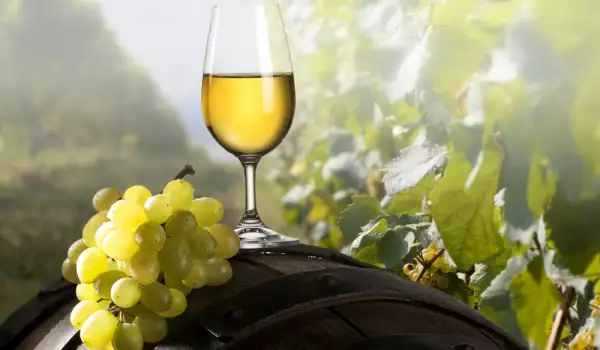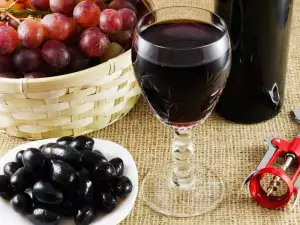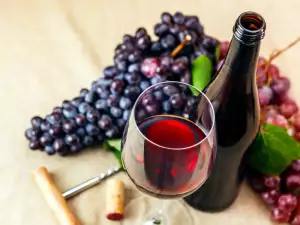Albariño is a white variety of grape used in winemaking. It is grown in the northwest regions of Portugal, as well as in Galicia, Spain. Moderate-sized plantations are found in the US and Australia also. This variety is synonymous with azal blanco, albarina, galego, albarin blanco, galeguinho and others.
In Spain they produce large amounts of Albariño grapes. There are wide expanses of vineyards especially in the region of Cambados. The variety is highly widespread in Vinho Verde too. In other cities, such as Lima and Braga, it is mixed with different varieties to produce blended wines. In recent years, Albariño has attracted the attention of Australian winemakers as well.
Not long ago, however, it became evident that much of the wine offered there was actually mistakenly dubbed Albariño for more than a decade. Producers believed they were investing money in the Spanish grape but found to their astonishment that they were growing cuttings of a French variety. This confusion was brought to light in 2008 when Australia was visited by a French expert. The resulting DNA analyses proved that the bottled wine was in fact Savagnin.
Albariño can be identified by its outer appearance. Its leaves are rounded, medium-sized, light green colored, having triangular serrations. The clusters are small, pinnate, sometimes loose. The grapes of Albariño are medium-sized, spherical.
Sometimes they are flattened slightly. They are yellowish or greenish colored. Often they have a pink tinge on the side facing the sun. The flesh is watery and soft, distinguished by a pleasant, fruity flavor. The skin covering it is thick and dense. Albariño fruits yield high quality white wines.

History of Albariño
Albariño is in fact the Galician name of the grape variety. In Portugal, they call it Alvarinho, sometimes even Cainho Branco. It is thought to have reached Iberia by monks who brought it during the 12th century. It was thought to be a twin of Riesling. There are also presumptions that it is related to the French Petit Manseng.
At the beginning of the 20th century, Albariño vines were seen mainly around tree trunks and only in limited areas. But several decades later, winemakers saw great potential in this grape and began putting in ever more resources into its husbandry and in expanding its vineyards.
Characteristics of Albariño
As already mentioned, Albariño is used to produce prized white wines. They are characterized by a light yellow color. The acidity is high, while their alcoholic content is between 11.5 - 12.5%. Albariño wines are exceptionally aromatic. Their scent will take you away to an open field, planted with all sorts of flowers and fragrant herbs.
Fruit aromas are not lacking by any means either. When inhaling its fragrance, it would be difficult not to associate the beverage with citrus fruits, as well as with peaches, apricots and apples. Sometimes one may sense a slight bitterness, caused by the thick skin of the fruit, as well as by the high number of seeds. Albariño is an elegant and full-bodied drink with a fresh opening and refined finale.
Serving Albariño
Wine from Albariño has something to impress even the most experienced palate. To fully showcase its remarkable qualities however, this scented drink needs to be slightly cooled. The recommended temperature is about 50°F (10°C). The charm of the drink can be further enhanced by the glass it is poured in.

That is why we recommend serving the wine in a standard white wine glass, also appropriate for serving other white wines. Crafted from glass, it is distinguished by a not-so-large volume. The stem is completely straight, cylindrical. The glass has very slight curves. It broadens slightly at the bottom, while narrowing around the stem and at the very top barely perceptibly.
When it comes to combining Albariño with food, there is the unwritten rule that white wine goes with white meat. As such, you can pair it with fish or other seafood delicacy dishes. White fish with olives in the oven are a fine choice, and so are the miller's white fish, fried hake, shark in egg whites and pangasius in tomato sauce.
From the other seafood recipes, we recommend salad with clams and tomatoes, pan-fried mussels, mussels with garlic, squid with mayonnaise and mustard, marinated oysters and sandwiches with crabs and sardines.
Bird meat delicacies are also suitable for serving with Albariño. The only condition is for them to be light. You can go with a quail stew, jellied quail, roasted partridge and Mediterranean style chicken with apricots.
Of course you can just pair your white wine with leafy vegetable hors d'oeuvres. To do this you can make a salad with dressing, putting in dock, spinach, nettle, lettuce and others.
Albariño wines can be combined with all kinds of fruits. In addition, the grape elixir can be combined with sweets, and if there are dairy products found in them, the result is absolutely marvelous. Some chefs recommended drinking the wine with various types of cakes, cheesecakes or pastries.








Comments